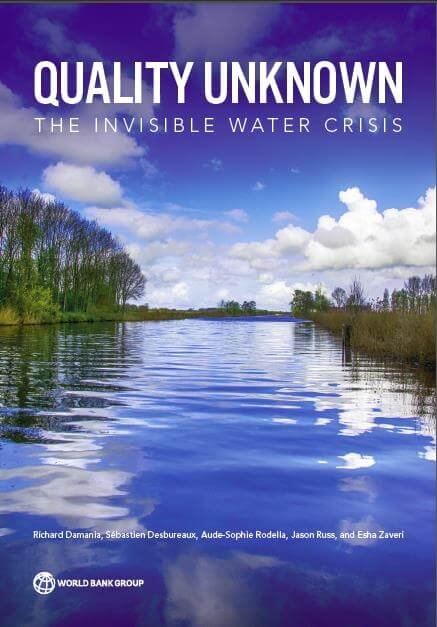- Share this article
- Subscribe to our newsletter
Quality Unknown: The Invisible Water Crisis
The report Quality Unknown: The Invisible Water Crisis was published by the World Bank in August 2019. According to the authors, the world faces an invisible crisis of water quality that is eliminating one-third of potential economic growth in heavily polluted areas and threatening human and environmental well-being. They point out that water quality goes largely unnoticed by the public, while water quantity in terms floods or droughts grabs public attention and the media spotlight.
The publication shows how a combination of bacteria, sewage, chemicals and plastics can suck oxygen from water supplies and transform water into poison for people and ecosystems. The authors call for immediate global, national and local-level attention to these dangers which face both developed and developing countries, since clean water is a key factor for economic growth.
Nitrogen and salinity threatening water quality
A key contributor to poor water quality is nitrogen, which, applied as fertilizer in agriculture, eventually enters rivers, lakes and oceans where it transforms into nitrates. Early exposure of children to nitrates affects their growth and brain development, impacting their health and adult earning potential.
The run-off and release into water from every additional kilogram of nitrogen fertilizer per hectare can increase the level of childhood stunting by as much as 19 per cent and reduce future adult earnings by as much as 2 per cent, compared to those who are not exposed.
The report also finds that as salinity in water and soil increases due to more intense droughts, storm surges and rising water extraction, agricultural yields fall. The world is losing enough food to saline water each year to feed 170 million people.
The authors recommend a set of actions that countries can take to improve water quality. These include: environmental policies and standards; accurate monitoring of pollution loads; effective enforcement systems; water treatment infrastructure supported with incentives for private investment; and reliable, accurate information disclosure to households to inspire citizen engagement.
(World Bank/ile)
More information and download of the report Quality Unknown: The Invisible Water Crisis: https://openknowledge.worldbank.org/handle/10986/32245





Add a comment
Be the First to Comment